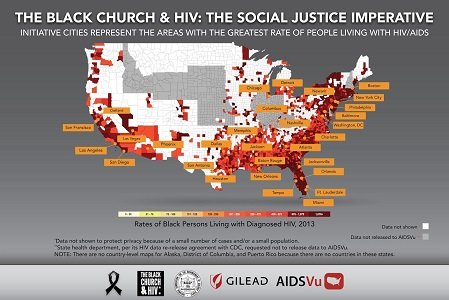It’s no secret that HIV disproportionately affects African-Americans.
Although African-Americans comprise less than 15 percent of the United States population, nearly half of all people living with HIV in America are black.
Another daunting statistic is that out of the new HIV infections in the age group 13 to 24, nearly 60 percent of the newly infected are blacks.
To address the prevalence of HIV in the African-American community, the NAACP launched the initiative “The Black Church and HIV: The Social Justice Imperative” approximately half a decade ago.
HIV in the black community is an issue of health equity. Lack of health care, limited access to resources, and poverty are contributing factors to why African-Americans are disproportionately infected with HIV/AIDS.
Since the black church has historically been an institution that fostered social change, the NAACP partnered with faith leaders to combat HIV. In 2011, the NAACP conducted a research study that explored faith leaders’ attitudes towards HIV/AIDS. The goal for the research was to identify strategies on how to engage the black church in HIV prevention and to address barriers that prevented faith leaders’ involvement in fighting the disease.
The focus groups were conducted in the 11 cities with the highest rates of HIV in the country: Atlanta, Baltimore, Chicago, Detroit, Houston, Los Angeles, Miami/Ft. Lauderdale, New Orleans, New York City, Philadelphia and Washington, D.C. The NAACP created accessible web-based resources to educate faith leaders about HIV: an activity manual, a virtual training manual and a pastoral belief pamphlet. These resources can be found online at theblackchurchandhiv.org. The activity manual includes statistics, dispels myths about the disease, and outlines the various social factors that contribute to HIV transmission in the black community.
The manual also lists several ways the black church can help raise awareness about HIV prevention: integrating activism in the worship service, conducting screenings, volunteering at organizations that work with people living with HIV, and promoting safe sex.
Since Baltimore has one of the highest rates of residents living with HIV in the country, the black church and HIV initiative will hold a town meeting in Baltimore later in the year.
In 2013, there were 17, 404 Baltimore residents living with diagnosed HIV. Seventy- seven percent were black; three percent Hispanic/Latino; and 15 percent white. Pastor Dr. Sheridan Todd Yeary of the Douglas Memorial Community Church, who assisted with the activity manual, is committed to raising awareness about HIV/AIDS.
“It is still devastating our community and our ignoring will not cause it to go away,” Yeary said. “The church is the proclaimer of life and health, and not death and despair. HIV is no longer a death sentence. And it is incumbent upon the church to inform our communities that good health and long life is still possible, even for persons with HIV. It is the social justice imperative issue of the 21st century.”
